Introduction
The story tarot is a set of 35 cards for idea creation, like tarot. This is not only for self-analysis but also for constructing story logic for story writers.
The difference between traditional tarot and this story tarot is that the story tarot has logical concept cards, such as reactions, events, directions, or structures. These logical concepts make it easier to create “stories.”
“Story” means the sequence of meaning, in my definition. Not only the story characters but also us live with such “stories” from the past to the future. That understanding allows us to create our lives energetically because it is meaningful.
This story tarot provides us with such logical symbols of “story.” Perhaps this is useful for those who like logic more than visible symbols. You can use this as an alternative to traditional tarot. You can also combine this with traditional tarot.
I hope you enjoy creating “stories” with this story tarot.
Table of contents
Download cards
The Story Tarot Cards (PDF File, A4 size, 16MB, Ver. 1.21 Dec.26.2023): Non-redistributable
Download and print the above file in A4 size. Then, cut the cards yourself and use them. (If you use it for story-creating, print the blank cards on the last page as much as you need.)
Definition of terms
- The subject: The problem you (or a character in your story) want to solve. The cards we drew indicate the ideas to solve that problem.
- The hero: The owner of the subject.
- In the case of self-analysis, this will be yourself (or your client).
- In the case of creating a story, this will be a character(s) or an organization(s) in your story.
- The episode: The process of resolving the subject. One subject has a single episode (if it is not divided).
- The story: The collection of episodes.
How to use
You can use the story tarot in the same way as traditional tarot. Feel free to think about how to use it.
Simple card reading
- You think about the subject, which is the problem you (or a character in your story) want to resolve.
- You shuffle and place the cards. Then, draw a card.
- You “read” the meaning of the card. The ideas you come up with will be clues for resolution.
Simple story construction
- You think about which part of the story you want to compose. That is the subject.
- You use the way of simple card reading and create the part.
- You create a simple episode. (Reference: the explanations of the cards)
If necessary, you can remove unnecessary cards.
Dividing a subject
You can divide a subject. That makes a single episode deeper.
- You compose a subject (an episode) with the simple story construction method.
- Divide it into multiple parts as you like.
- Draw a card for each divided part, and create a new subject and episode.
- Prepare sticky notes, a pen, and blank cards. Write the ideas on sticky notes and paste them on a blank card for each subject. After that, put the card back in the pile.
- Adjust the card order as you like.
Associating subjects
You can associate subjects. That makes unrelated episodes related. That makes your story wider.
- You compose multiple subjects with the simple story construction method.
- Choose two subjects you want to associate with. We call the subject that occurs first the “source subject,” and the other the “target subject.”
- You associate them. An event in the source subject triggers an event in the target subject. For example, the reward in the source subject triggers the resolution in the target subject. In this case, the hero notices how to resolve the target subject by receiving the reward of the source subject.
- Prepare sticky notes and a pen. Write and paste the notes of association to each card.
- Adjust the card order as you like.
A method of putting a hint
With a hint of resolution in advance, you can compose a more natural story.
- Prepare sticky notes, a pen, and blank cards.
- You create an episode with the simple story construction method.
- Refer to the explanations of the card and extract the “Hint part.” You think about the factor that resolves the subject. It often seems worthless or irrelevant to the resolution.
- Then, you write the hint ideas on a sticky note and paste it on a blank card. We call it the “hint card.”
- Place the hint card everywhere before the subject, as you like.
Cards
Old versions are here.
35 Cards list
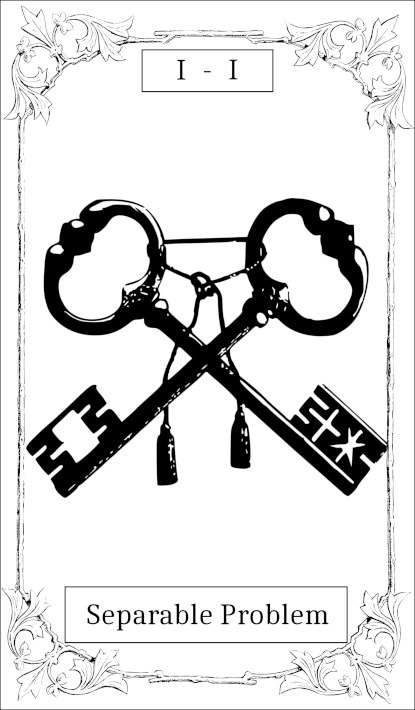
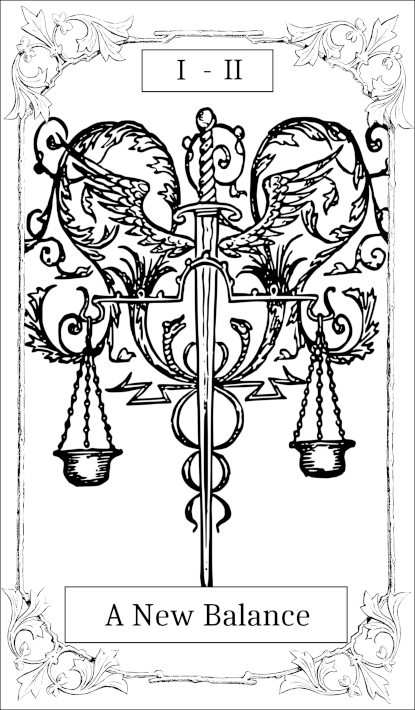
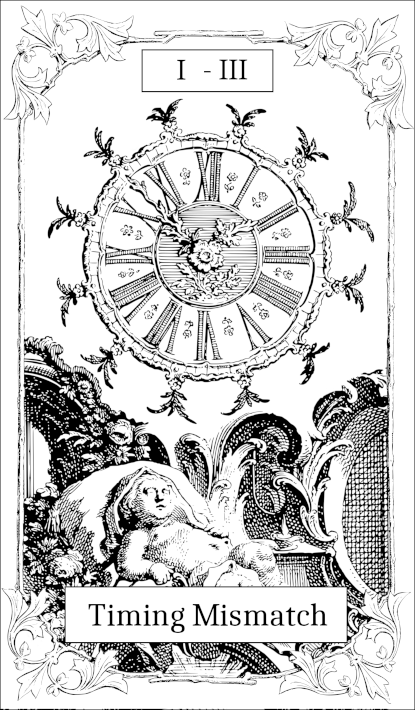
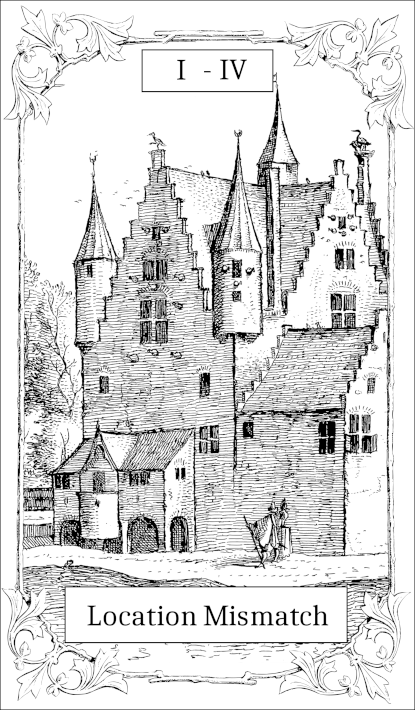
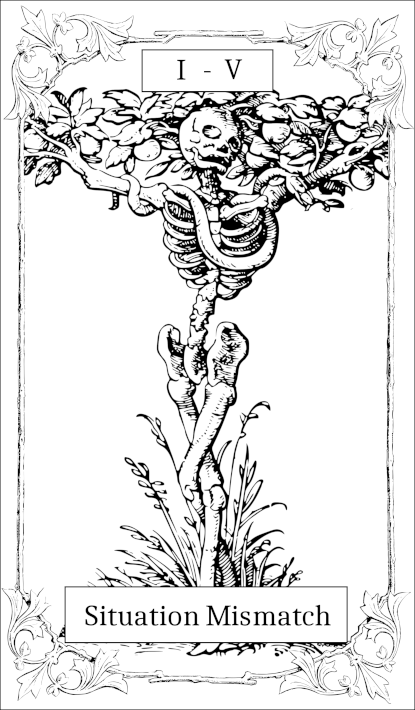

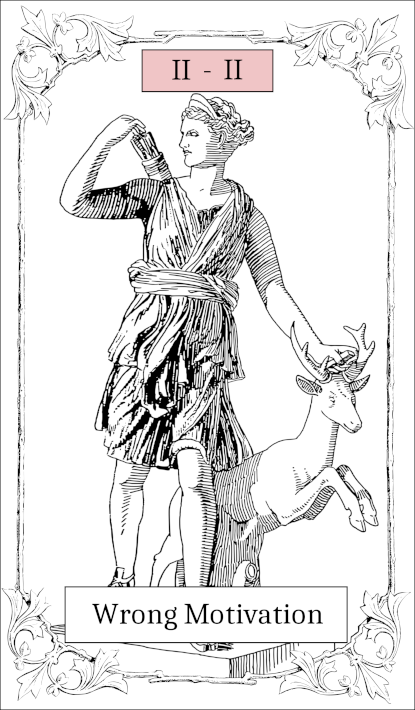
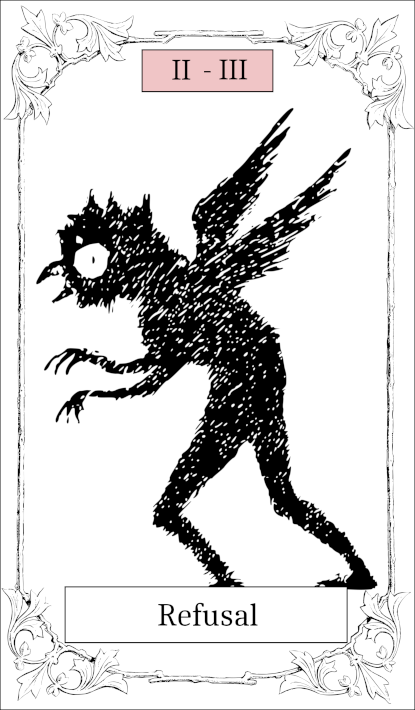
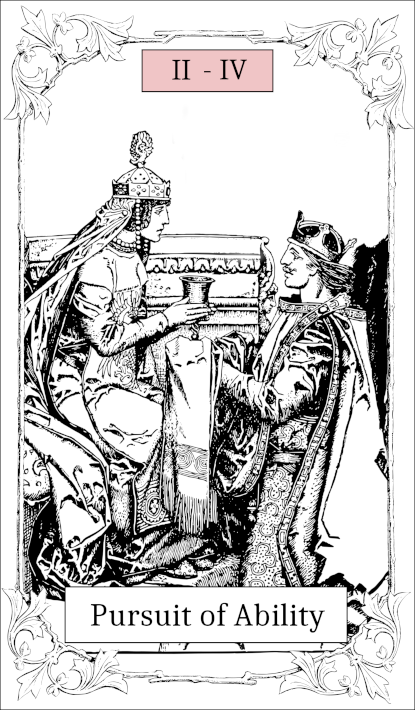
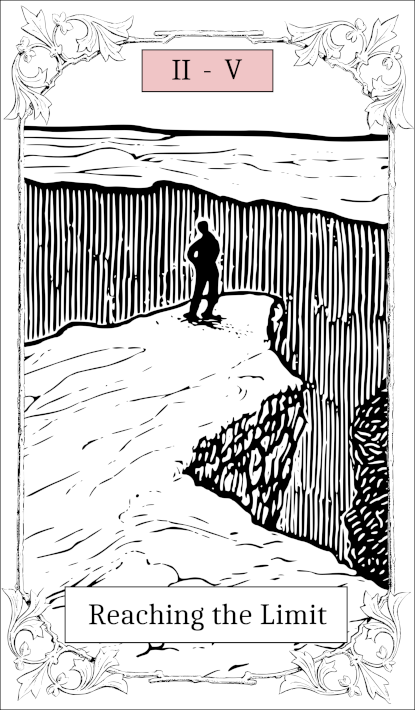
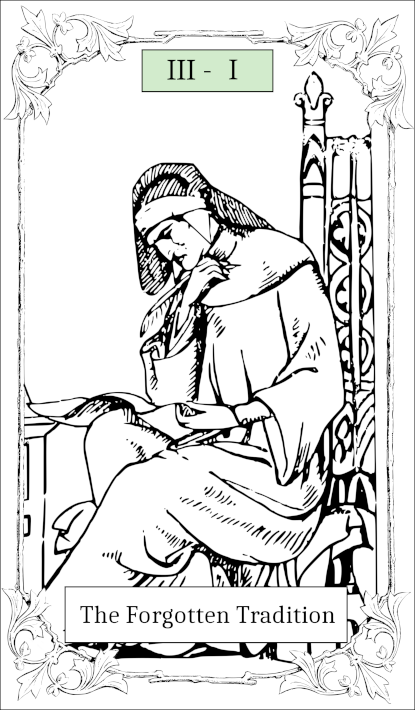
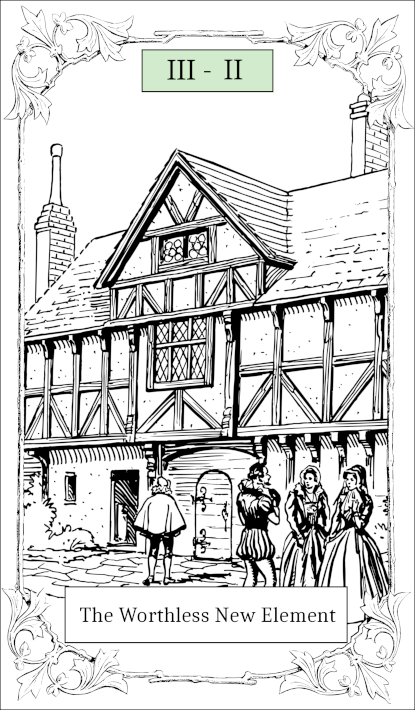
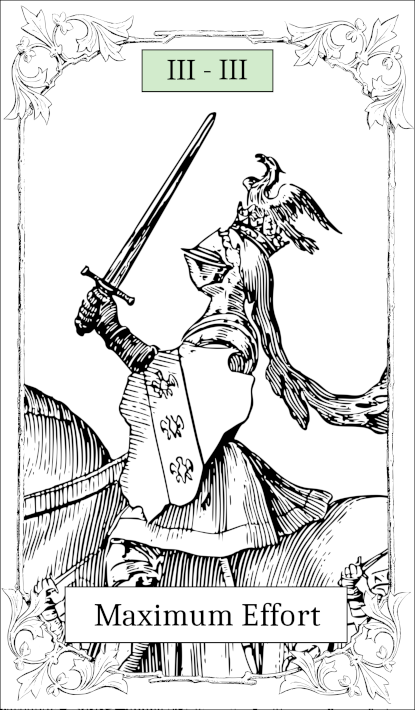


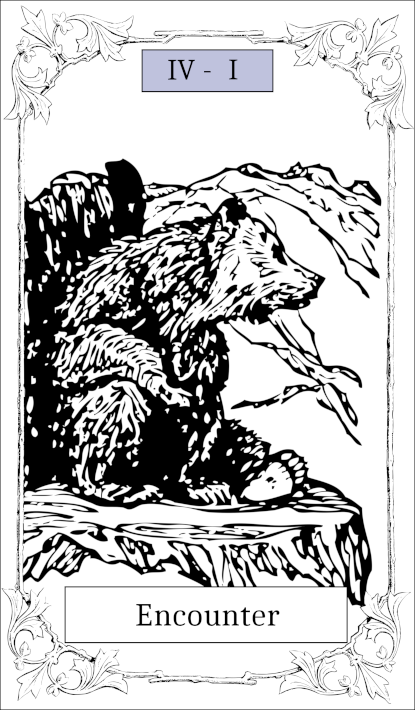
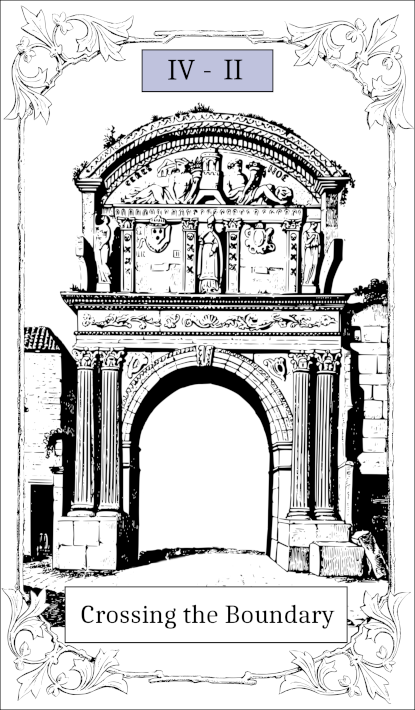
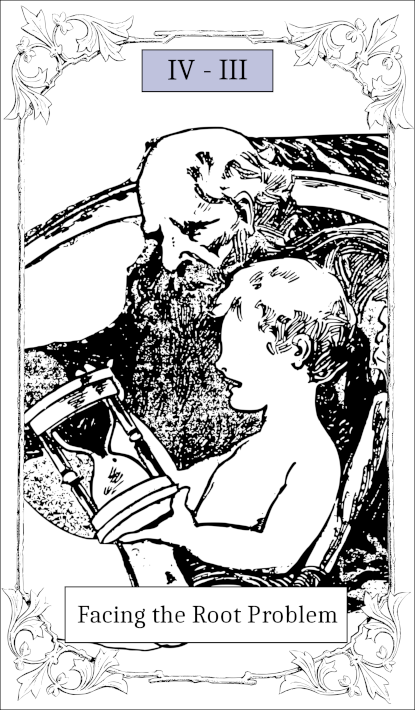
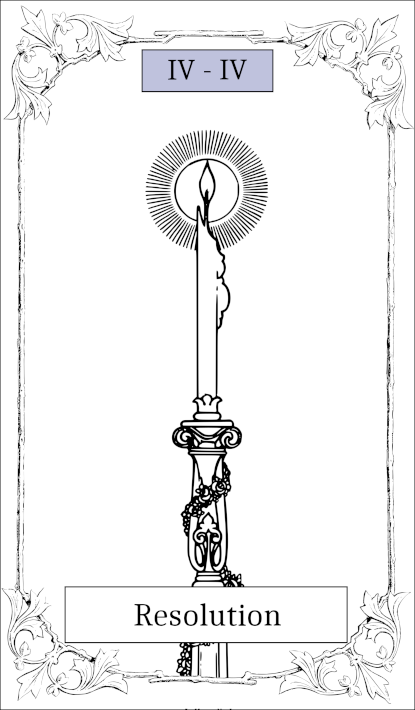
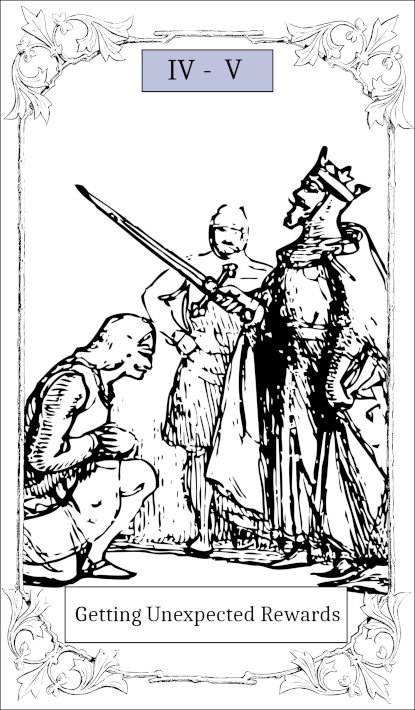
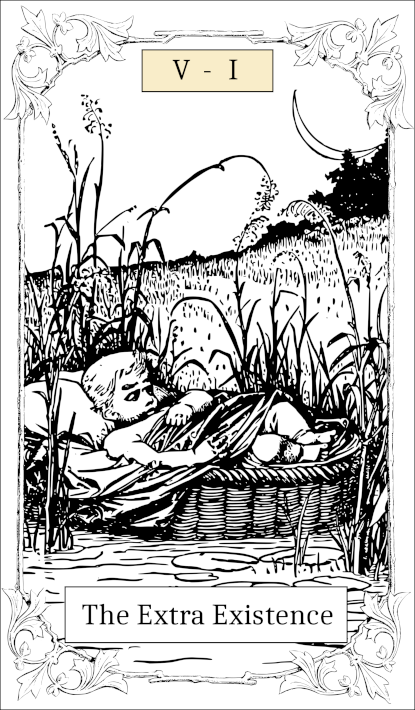

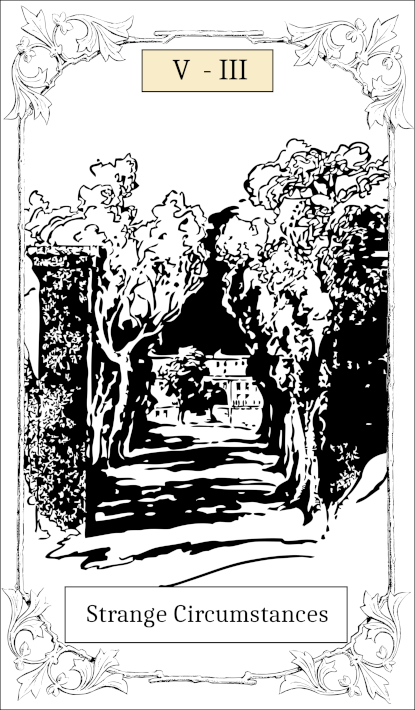

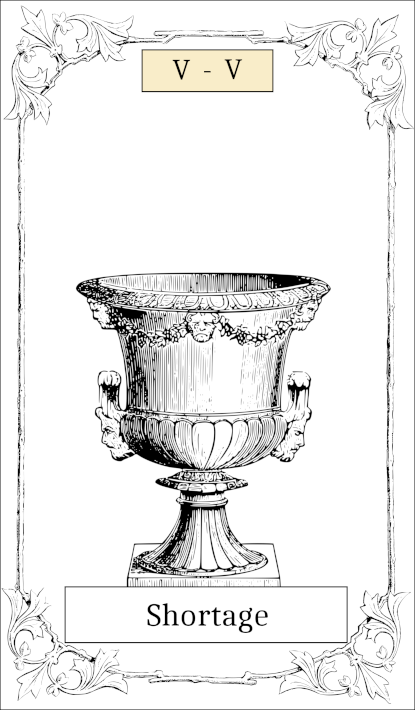
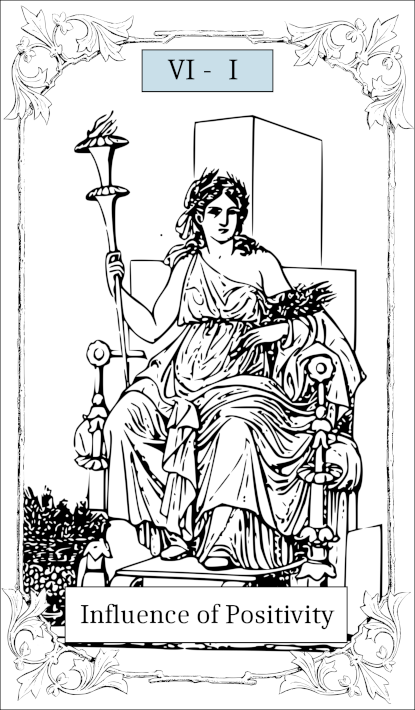
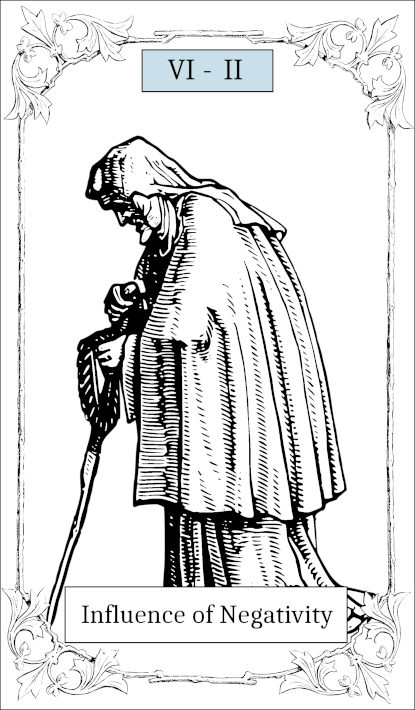
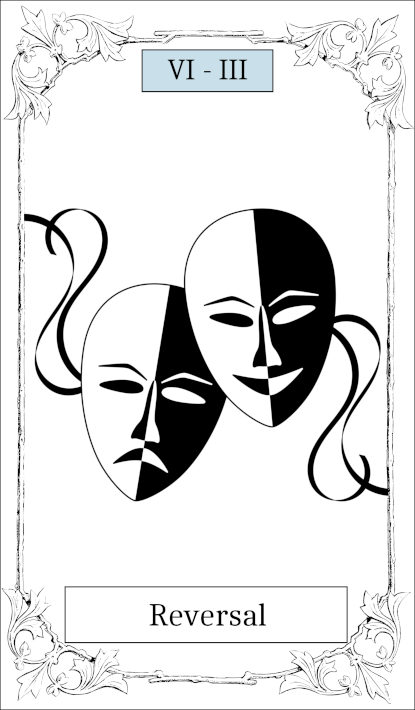
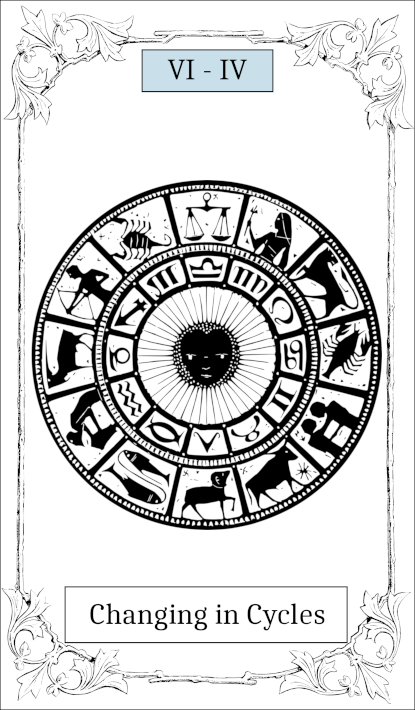

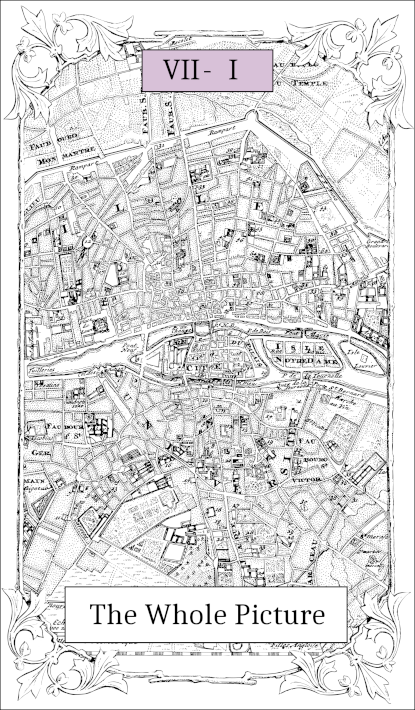
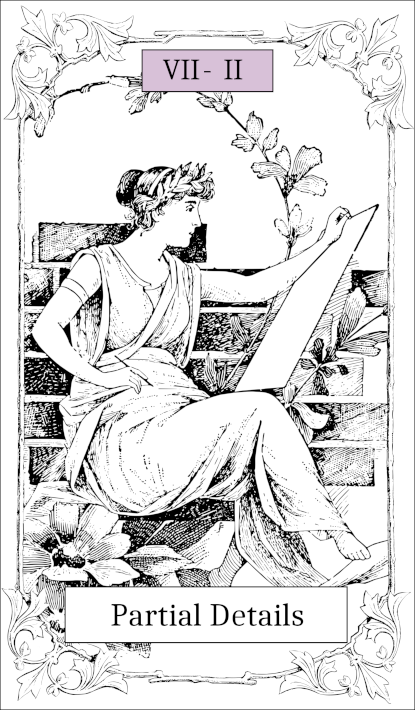

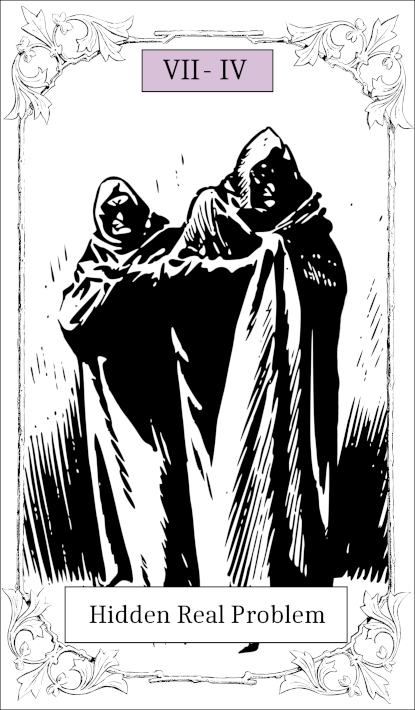
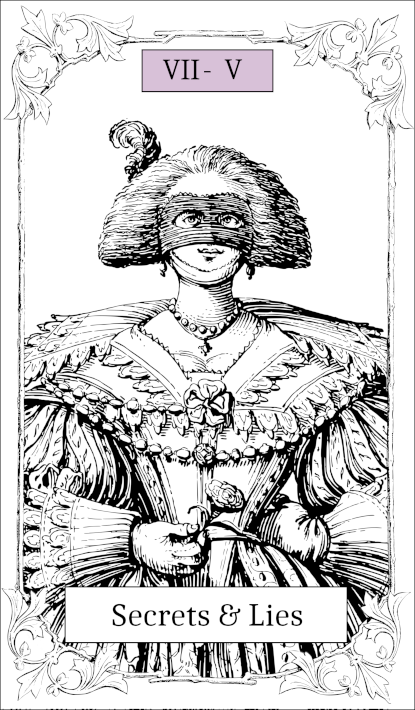

I. Cause Cards
The cause cards indicate that the subject has unique causes. The hero needs to find them and deal with them appropriately. That will lead the hero to a resolution.
I-I. Separable Problem
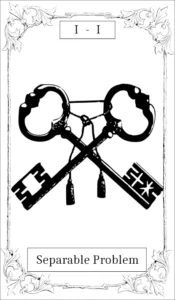
- The symbol: Two (or more) different, separable problems cause the subject, although it looks like a single problem. To resolve the subject, the hero has to notice them and deal with them individually.
- Hint part:
- Introduce the following factors:
- The possibility that there are two different, separable causes
- The factor that the hero can notice them and deal with them individually
- When the hero notices it, it indicates that something will happen.
- Introduce the following factors:
- Occurrence part: Two different causes appear. That makes the subject appear or occur.
- Reaction part: The subject grows. The hero begins to deal with things that don’t relate to those causes, but that act leads him closer to the factor.
- Resolution part: The factor appears. That makes the hero notice the two causes, and he resolves the subject.
- Reward part: The hero receives a reward for what he did when he was unaware of those two causes. That leads to solving a different problem (another subject).
- What to think about:
- What are the two (or more) different, separable problems?
- What is the factor that the hero can notice them and deal with them individually?
- (When associating with another subject) What is the reward that solves another subject?
I-II. A New Balance
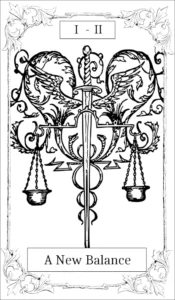
- The symbol: A lost balance causes the subject. To resolve the subject, the hero has to notice them and create a new balance.
- Hint part:
- Introduce the following factors:
- The possibility that the balance of something changes
- The factor that the hero can notice and create a new balance
- When the hero notices it, it indicates that something will happen.
- Introduce the following factors:
- Occurrence part: A stable state changes and loses balance. That makes the subject appear or occur.
- Reaction part: The subject grows. The hero begins to deal with things that don’t relate to the balance, but that act leads him closer to the factor.
- Resolution part: The factor appears. That makes the hero notice the lost balance, create a new balance, and resolve the subject.
- Reward part: The hero receives a reward for what he did when he was unaware of the lost balance. That leads to solving a different problem (another subject).
- What to think about:
- What is the lost balance?
- What is the factor that the hero can notice and create a new balance?
- (When associating with another subject) What is the reward that solves another subject?
I-III. Timing Mismatch
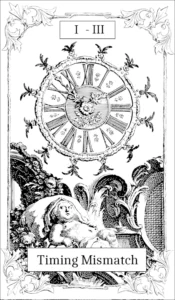
- The symbol: A mismatch of time or timescale prevents the hero from resolving the subject. To resolve the subject, the hero has to notice it and change it.
- Hint part:
- Introduce the following factors:
- The possibility that a particular time or timescale affects the subject differently
- The factor that the hero can notice and change the time or timescale
- When the hero notices it, it indicates that something will happen.
- Introduce the following factors:
- Occurrence part: There is a case where a particular time or timescale affects. Then, the subject appears or occurs.
- Reaction part: The subject grows. The hero begins to deal with things that don’t relate to changing the time or timescale, but that act leads him closer to the factor.
- Resolution part: The factor appears. That makes the hero notice it, and he resolves the subject.
- Reward part: The hero receives a reward for what he did when he was unaware of changing the time or timescale. That leads to solving a different problem (another subject).
- What to think about:
- How does a particular time or timescale affect the subject differently?
- What is the factor that the hero can notice and change the time or timescale?
- (When associating with another subject) What is the reward that solves another subject?
I-IV. Location Mismatch
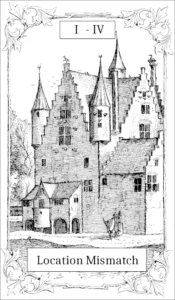
- The symbol: A mismatch of location or scale of location prevents the hero from resolving the subject. To resolve the subject, the hero has to notice it and change it.
- Hint part:
- Introduce the following factors:
- The possibility that a location or scale of location affects the subject differently
- The factor that the hero can notice and change the location or scale of the location
- When the hero notices it, it indicates that something will happen.
- Introduce the following factors:
- Occurrence part: There is a case where a particular location or scale of location affects. Then, the subject appears or occurs.
- Reaction part: The subject grows. The hero begins to deal with things that don’t relate to changing the location or scale of the location, but that act leads him closer to the factor.
- Resolution part: The factor appears. That makes the hero notice it, and he resolves the subject.
- Reward part: The hero receives a reward for what he did when he was unaware of changing the location or scale of the location. That leads to solving a different problem (another subject).
- What to think about:
- How does a particular location or scale of location affect the subject differently?
- What is the factor that the hero can notice and change the location or scale of the location?
- (When associating with another subject) What is the reward that solves another subject?
I-V. Situation Mismatch
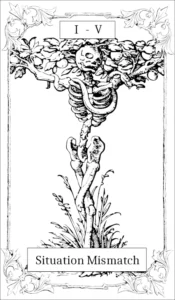
- The symbol: A mismatch of situation or scale of situation prevents the hero from resolving the subject. To resolve the subject, the hero has to notice it and change it.
- Hint part:
- Introduce the following factors:
- The possibility that a situation or scale of situation affects the subject differently
- The factor that the hero can notice and change the situation or scale of the situation
- When the hero notices it, it indicates that something will happen.
- Introduce the following factors:
- Occurrence part: There is a case where a particular situation or scale of situation affects. The subject appears or occurs.
- Reaction part: The subject grows. The hero begins to deal with things that don’t relate to changing the situation or scale of the situation, but that act leads him closer to the factor.
- Resolution part: The factor appears. That makes the hero notice it, and he resolves the subject.
- Reward part: The hero receives a reward for what he did when he was unaware of changing the situation or scale of the situation. That leads to solving a different problem (another subject).
- What to think about:
- How does a particular situation or scale of the situation affect the subject differently?
- What is the factor that the hero can notice and change the situation or scale of the situation?
- (When associating with another subject) What is the reward that solves another subject?
II. Reaction Cards
The reaction cards indicate that the subject causes a reaction to the hero. The reaction is natural, but it will not resolve the subject. That awareness will lead the hero to a resolution.
II-I. Misunderstanding

- The symbol: The subject causes the hero’s misunderstanding of something. To resolve the subject, the hero has to clear up the misunderstanding.
- Hint part:
- Introduce the following factors:
- The possibility of the subject occurring
- The factor that the hero can clear up misunderstandings
- When the hero clears up misunderstandings, it indicates that something will happen.
- Introduce the following factors:
- Occurrence part: The subject appears or occurs. That makes the hero misunderstand.
- Reaction part: The subject grows. The misunderstanding makes the hero begin to deal with things that don’t resolve the subject, but that act leads him closer to the factor.
- Resolution part: The factor appears. That clears up the hero’s misunderstanding, and he resolves the subject.
- Reward part: The hero receives a reward for what he did when he misunderstood. That leads to solving a different problem (another subject).
- What to think about:
- What is the misunderstanding?
- What is the factor that the hero can clear up the misunderstanding?
- (When associating with another subject) What is the reward that solves another subject?
II-II. Wrong Motivation
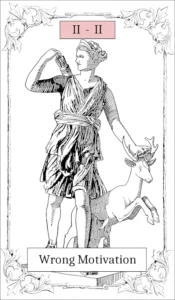
- The symbol: The subject causes the hero’s motivation for something. To resolve the subject, the hero has to give it up.
- Hint part:
- Introduce the following factors:
- The possibility of the subject occurring
- The factor that the hero can give up motivation
- When the hero gives it up, it indicates that something will happen.
- Introduce the following factors:
- Occurrence part: The subject appears or occurs. That makes the hero motivated.
- Reaction part: The subject grows. The motivation makes the hero begin to deal with things that don’t resolve the subject, but that act leads him closer to the factor.
- Resolution part: The factor appears. That makes the hero give up motivation, and he resolves the subject.
- Reward part: The hero receives a reward for what he did when he was motivated. That leads to solving a different problem (another subject).
- What to think about:
- What is the hero motivated for?
- What is the factor that the hero can give up motivation?
- (When associating with another subject) What is the reward that solves another subject?
II-III. Refusal
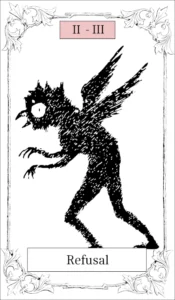
- The symbol: The subject causes the hero’s refusal of something. To resolve the subject, the hero has to stop the refusal.
- Hint part:
- Introduce the following factors:
- The possibility of the subject occurring
- The factor that the hero can stop refusing
- When the hero stops refusing, it indicates that something will happen.
- Introduce the following factors:
- Occurrence part: The subject appears or occurs. That makes the hero refuse something.
- Reaction part: The subject grows. The refusal makes the hero begin to deal with things that don’t resolve the subject, but that act leads him closer to the factor.
- Resolution part: The factor appears. That makes the hero stop refusing, and he resolves the subject.
- Reward part: The hero receives a reward for what he did when he refused. That leads to solving a different problem (another subject).
- What to think about:
- What does the hero refuse?
- What is the factor that the hero can stop refusing?
- (When associating with another subject) What is the reward that solves another subject?
II-VI. Pursuit of Ability

- The symbol: The subject causes the hero’s pursuit of an ability. To resolve the subject, the hero has to let go of it.
- Hint part:
- Introduce the following factors:
- The possibility of the subject occurring
- The factor that the hero can let go of pursuing an ability
- When the hero lets go of it, it indicates that something will happen.
- Introduce the following factors:
- Occurrence part: The subject appears or occurs. That makes the hero pursue an ability.
- Reaction part: The subject grows. The pursuit of an ability makes the hero begin to deal with things that don’t resolve the subject, but that act leads him closer to the factor.
- Resolution part: The factor appears. That makes the hero let go of his pursuit of an ability, and he resolves the subject.
- Reward part: The hero receives a reward for what he did when he pursued the ability. That leads to solving a different problem (another subject).
- What to think about:
- What ability does the hero pursue?
- What is the factor that the hero can let go of pursuing his abilities?
- (When associating with another subject) What is the reward that solves another subject?
II-V. Reaching the Limit
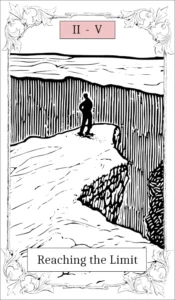
- The symbol: The subject causes a limit on resources for the hero. The resources could be not only material but also mental. To resolve the subject, the hero has to lose the limit.
- Hint part:
- Introduce the following factors:
- The possibility of the subject occurring
- The factor that the hero can lose the limit
- When the hero loses the limit, it indicates that something will happen.
- Introduce the following factors:
- Occurrence part: The subject appears or occurs. That gives a limit to the hero.
- Reaction part: The subject grows. The limit makes the hero begin to deal with things that don’t resolve the subject, but that act leads him closer to the factor.
- Resolution part: The factor appears. That makes the hero lose the limit, and he resolves the subject.
- Reward part: The hero receives a reward for what he did when he had the limit. That leads to solving a different problem (another subject).
- What to think about:
- What is the hero’s limit?
- What is the factor that the hero can lose the limit?
- (When associating with another subject) What is the reward that solves another subject?
III. The Attitude Cards
The attitude cards indicate that the hero’s attitude affects the subject. The hero needs to change his attitude. That will lead the hero to a resolution.
III-I. The Forgotten Tradition
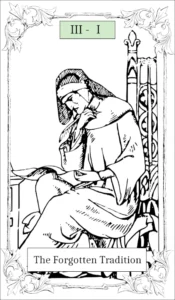
- The symbol: There is a forgotten tradition or wisdom to solve the subject. To resolve the subject, the hero has to notice the meaning of it.
- Hint part:
- Introduce the following factors:
- The possibility of the subject occurring
- The factor that the hero can notice the meaning of the tradition
- When the hero notices it, it indicates that something will happen.
- Introduce the following factors:
- Occurrence part: There is a strange tradition. But nobody knows or cares about the meaning of it. In such a situation, the subject appears or occurs.
- Reaction part: The subject grows. The hero begins to deal with things that don’t relate to the tradition, but that act leads him closer to the factor.
- Resolution part: The factor appears. That makes the hero aware of the meaning of the tradition, and he resolves the subject.
- Reward part: The hero receives a reward for what he did when he was unaware of the meaning of the tradition. That leads to solving a different problem (another subject).
- What to think about:
- What is the tradition? Why does that resolve the subject?
- What is the factor that the hero can notice the meaning of the tradition?
- (When associating with another subject) What is the reward that solves another subject?
III-II. The Worthless New Element

- The symbol: There is a new element that looks worthless to solve the subject. To resolve the subject, the hero has to be aware of how to use it.
- Hint part:
- Introduce the following factors:
- The possibility of the subject occurring
- The factor that the hero can notice about how to use that new element
- When the hero notices it, it indicates that something will happen.
- Introduce the following factors:
- Occurrence part: The new element appears or occurs. But nobody thinks it is valuable and cares about it. In such a situation, the subject appears or occurs.
- Reaction part: The subject grows. The hero begins to deal with things that don’t relate to the new element, but that act leads him closer to the factor.
- Resolution part: The factor appears. That makes the hero aware of how to use the new element, and he resolves the subject.
- Reward part: The hero receives a reward for what he did when he was unaware of how to use the new element. That leads to solving a different problem (another subject).
- What to think about:
- What is the new element? How to use it?
- What is the factor that the hero can notice about how to use the new element?
- (When associating with another subject) What is the reward that solves another subject?
III-III. Maximum Effort
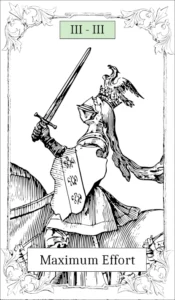
- The symbol: There is an element that gives the hero maximum effort. To resolve the subject, the hero has to notice it and put his all into the subject.
- Hint part:
- Introduce the following factors:
- The possibility of the subject occurring
- The factor that gives the hero maximum effort
- When the hero notices it, it indicates that something will happen.
- Introduce the following factors:
- Occurrence part: The subject appears or occurs. The hero doesn’t put in his all.
- Reaction part: The subject grows. The hero begins to deal with things that don’t relate to the element that gives the hero maximum effort, but that act leads him closer to the factor.
- Resolution part: The factor appears. That gives the hero maximum effort, and he resolves the subject.
- Reward part: The hero receives a reward for what he did when he didn’t put in his all. That leads to solving a different problem (another subject).
- What to think about:
- What makes the hero not put in his all at the beginning?
- What is the factor that gives the hero maximum effort?
- (When associating with another subject) What is the reward that solves another subject?
III-IV. Trust in Others
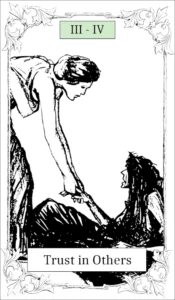
- The symbol: There is an element that helps the hero. To resolve the subject, the hero has to notice it and trust in it.
- Hint part:
- Introduce the following factors:
- The possibility of the subject occurring
- The factor that the hero can trust in the helper
- When the hero notices it, it indicates that something will happen.
- Introduce the following factors:
- Occurrence part: The subject appears or occurs. The hero doesn’t notice that the helper will help him.
- Reaction part: The subject grows. The hero begins to deal with things that don’t relate to the helper, but that act leads him closer to the factor.
- Resolution part: The factor appears. That makes the hero notice the helper and trust in it, and he resolves the subject.
- Reward part: The hero receives a reward for what he did when he didn’t notice and trust in the helper. That leads to solving a different problem (another subject).
- What to think about:
- What helps the hero?
- What is the factor that makes the hero notice the helper and trust in it?
- (When associating with another subject) What is the reward that solves another subject?
III-V. The Hardest Path
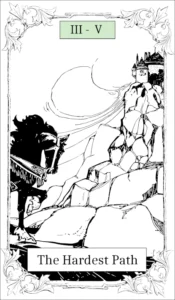
- The symbol: There is the hardest path to solving the subject. To resolve the subject, the hero has to accept it and choose it.
- Hint part:
- Introduce the following factors:
- The possibility of the subject occurring
- The factor that makes the hero accept the hardest path and choose it
- When the hero accepts it, it indicates that something will happen.
- Introduce the following factors:
- Occurrence part: The subject appears or occurs. The hero doesn’t accept the hardest path.
- Reaction part: The subject grows. The hero begins to deal with things that don’t relate to the hardest path, but that act leads him closer to the factor.
- Resolution part: The factor appears. That makes the hero accept the hardest path and choose it, and he resolves the subject.
- Reward part: The hero receives a reward for what he did when he didn’t accept the hardest path. That leads to solving a different problem (another subject).
- What to think about:
- What is the hardest path?
- What is the factor that makes the hero accept the hardest path and choose it?
- (When associating with another subject) What is the reward that solves another subject?
IV. Event Cards
The event cards indicate that the subject brings the hero an event. The event requests that the hero face up to it. That will lead the hero to a resolution.
IV-I. Encounter
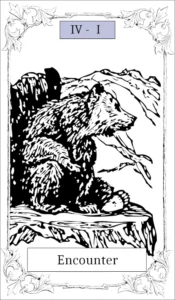
- The symbol: The subject brings the hero into an encounter with something. To resolve the subject, the hero has to accept it and face up to it.
- Hint part:
- Introduce the following factors:
- The possibility of the subject occurring
- The factor that the hero can face up to the encounter
- When the hero faces up to it, it indicates that something will happen.
- Introduce the following factors:
- Occurrence part: The subject appears or occurs. That leads the hero to encounter.
- Reaction part: The subject grows. The hero begins to deal with things that don’t make him face up to the encounter, but that act leads him closer to the factor.
- Resolution part: The factor appears. That makes the hero face up to the encounter, and he resolves the subject.
- Reward part: The hero receives a reward for what he did when he avoided facing the encounter. That leads to solving a different problem (another subject).
- What to think about:
- What does the hero encounter?
- What is the factor that the hero can accept the encounter and face it?
- (When associating with another subject) What is the reward that solves another subject?
IV-II. Crossing the Boundary
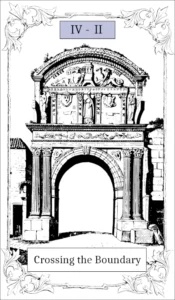
- The symbol: The subject brings the hero the necessity of crossing a boundary. To resolve the subject, the hero has to accept it and cross it.
- Hint part:
- Introduce the following factors:
- The possibility of the subject occurring
- The factor that the hero can cross the boundary
- When the hero crosses it, it indicates that something will happen.
- Introduce the following factors:
- Occurrence part: The subject appears or occurs. That makes it necessary for the hero to cross a boundary.
- Reaction part: The subject grows. The hero begins to deal with things that don’t make him cross the boundary, but that act leads him closer to the factor.
- Resolution part: The factor appears. That makes the hero cross the boundary, and he resolves the subject.
- Reward part: The hero receives a reward for what he did when he avoided the crossing. That leads to solving a different problem (another subject).
- What to think about:
- What boundary does the hero cross?
- What is the factor that the hero can accept the crossing?
- (When associating with another subject) What is the reward that solves another subject?
IV-III. Facing the Root Problem

- The symbol: The subject brings the hero the necessity to face up to the root problem. To resolve the subject, the hero has to accept it and face it.
- Hint part:
- Introduce the following factors:
- The possibility of the subject occurring
- The factor that the hero can face up to the root problem
- When the hero faces it, it indicates that something will happen.
- Introduce the following factors:
- Occurrence part: The subject appears or occurs. That makes it necessary for the hero to face up to the root problem.
- Reaction part: The subject grows. The hero begins to deal with things that don’t make him face up to the root problem, but that act leads him closer to the factor.
- Resolution part: The factor appears. That makes the hero face up to the root problem, and he resolves the subject.
- Reward part: The hero receives a reward for what he did when he avoided facing the root problem. That leads to solving a different problem (another subject).
- What to think about:
- What is the root problem?
- What is the factor that the hero can accept the root problem and face it?
- (When associating with another subject) What is the reward that solves another subject?
IV-IV. Resolution
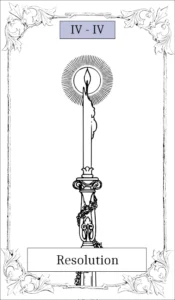
- The symbol: The subject brings the hero the necessity to face up to the resolution. To resolve the subject, the hero has to accept it and face it.
- Hint part:
- Introduce the following factors:
- The possibility of the subject occurring
- The factor that the hero can face up to the resolution
- When the hero faces it, it indicates that something will happen.
- Introduce the following factors:
- Occurrence part: The subject appears or occurs. That makes it necessary for the hero to face up to the resolution.
- Reaction part: The subject grows. The hero begins to deal with things that don’t make him face up to the resolution, but that act leads him closer to the factor.
- Resolution part: The factor appears. That makes the hero face up to the resolution, and he resolves the subject.
- Reward part: The hero receives a reward for what he did when he avoided facing the resolution. That leads to solving a different problem (another subject).
- What to think about:
- What is the point of the resolution?
- What is the factor that the hero can accept the point of the resolution and face it?
- (When associating with another subject) What is the reward that solves another subject?
IV-V. Getting Unexpected Rewards
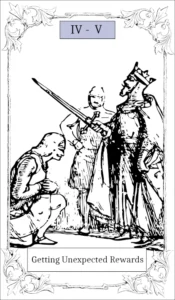
- The symbol: The subject brings the hero unexpected rewards. The rewards could look negative for the hero. To resolve the subject, the hero has to accept them and receive them.
- Hint part:
- Introduce the following factors:
- The possibility of the subject occurring
- The factor that the hero can accept to receive unexpected rewards
- When the hero receives them, it indicates that something will happen.
- Introduce the following factors:
- Occurrence part: The subject appears or occurs. That makes it necessary for the hero to receive unexpected rewards.
- Reaction part: The subject grows. He begins to deal with things that don’t make him receive unexpected rewards, but that act leads him closer to the factor.
- Resolution part: The factor appears. That makes the hero receive the rewards, and he resolves the subject.
- Reward part: The hero receives a reward for what he did when he avoided receiving the rewards. That leads to solving a different problem (another subject).
- What to think about:
- What are the unexpected rewards?
- What is the factor that the hero can accept the unexpected rewards?
- (When associating with another subject) What is the reward that solves another subject?
V. Circumstance Cards
The circumstances cards indicate that the subject has a special background. The hero needs to find it and deal with it. That will lead the hero to a resolution.
V-I. The Extra Existence

- The symbol: An extra existence causes the subject. To resolve the subject, the hero has to find it and deal with it.
- Hint part:
- Introduce the following factors:
- The possibility of the extra existence appearing
- The factor that the hero can deal with it
- When the hero does it, it indicates that something will happen.
- Introduce the following factors:
- Occurrence part: The extra existence appears. That causes the subject.
- Reaction part: The subject grows. The hero begins to deal with things that don’t relate to the extra existence, but that act leads him closer to the factor.
- Resolution part: The factor appears. That makes the hero deal with the extra existence, and he resolves the subject.
- Reward part: The hero receives a reward for what he did when he avoided dealing with the extra existence. That leads to solving a different problem (another subject).
- What to think about:
- What is the extra existence?
- What is the factor that the hero can deal with the extra existence?
- (When associating with another subject) What is the reward that solves another subject?
V-II. Future Possibility

- The symbol: A future possibility causes the subject. To resolve the subject, the hero has to find it and deal with it.
- Hint part:
- Introduce the following factors:
- The future possibilities
- The factor that the hero can deal with one of them
- When the hero does it, it indicates that something will happen.
- Introduce the following factors:
- Occurrence part: A future possibility appears. That causes the subject.
- Reaction part: The subject grows. The hero begins to deal with things that don’t relate to the possibility, but that act leads him closer to the factor.
- Resolution part: The factor appears. That makes the hero deal with the possibility, and he resolves the subject.
- Reward part: The hero receives a reward for what he did when he avoided dealing with the possibility. That leads to solving a different problem (another subject).
- What to think about:
- What is the future possibility?
- What is the factor that the hero can deal with the possibility?
- (When associating with another subject) What is the reward that solves another subject?
V-III. Strange Circumstances
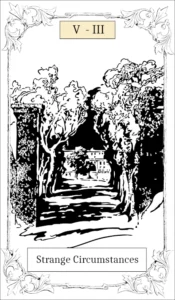
- The symbol: The strange circumstances cause the subject. To resolve the subject, the hero has to find it and deal with it.
- Hint part:
- Introduce the following factors:
- The possibility of strange circumstances appearing
- The factor that the hero can deal with it
- When the hero does it, it indicates that something will happen.
- Introduce the following factors:
- Occurrence part: Strange circumstances appear. That causes the subject.
- Reaction part: The subject grows. The hero begins to deal with things that don’t relate to the circumstances, but that act leads him closer to the factor.
- Resolution part: The factor appears. That makes the hero deal with the circumstances, and he resolves the subject.
- Reward part: The hero receives a reward for what he did when he avoided dealing with the circumstances. That leads to solving a different problem (another subject).
- What to think about:
- What are the strange circumstances?
- What is the factor that the hero can deal with the circumstances?
- (When associating with another subject) What is the reward that solves another subject?
V-IV. The History
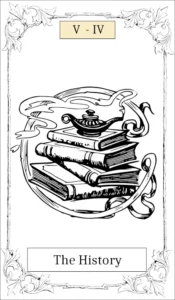
- The symbol: A past event causes the subject. To resolve the subject, the hero has to find it and resolve it.
- Hint part:
- Introduce the following factors:
- The possibility of the past event appearing
- The factor that the hero can resolve it
- When the hero does it, it indicates that something will happen.
- Introduce the following factors:
- Occurrence part: The past event appears. That causes the subject.
- Reaction part: The subject grows. The hero begins to deal with things that don’t relate to the event, but that act leads him closer to the factor.
- Resolution part: The factor appears. That makes the hero resolve the event, and he resolves the subject.
- Reward part: The hero receives a reward for what he did when he avoided dealing with the event. That leads to solving a different problem (another subject).
- What to think about:
- What is the past event?
- What is the factor that the hero can resolve the event?
- (When associating with another subject) What is the reward that solves another subject?
V-V. Shortage
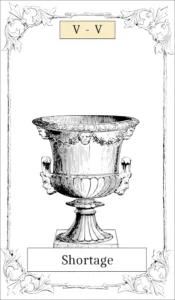
- The symbol: A shortage causes the subject. To resolve the subject, the hero has to find it and deal with it.
- Hint part:
- Introduce the following factors:
- The possibility of the shortage occurring
- The factor that the hero can deal with the shortage
- When the hero does it, it indicates that something will happen.
- Introduce the following factors:
- Occurrence part: The shortage occurs. That causes the subject.
- Reaction part: The subject grows. The hero begins to deal with things that don’t relate to the shortage, but that act leads him closer to the factor.
- Resolution part: The factor appears. That makes the hero deal with the shortage, and he resolves the subject.
- Reward part: The hero receives a reward for what he did when he avoided dealing with the shortage. That leads to solving a different problem (another subject).
- What to think about:
- What is the shortage?
- What is the factor that the hero can deal with the shortage?
- (When associating with another subject) What is the reward that solves another subject?
VI. Direction Cards
The direction cards indicate that a condition affects the subject. The usual condition works for the subject. However, after the condition changes, the subject loses power. That opportunity will lead the hero to a resolution.
VI-I. Influence of Positivity

- The symbol: The hero’s positivity influences the subject. To resolve the subject, the hero has to be positive.
- Hint part:
- Introduce the following factors:
- The possibility of the subject occurring
- The factor that the hero can be positive
- When the hero is positive, it indicates that something will happen.
- Introduce the following factors:
- Occurrence part: The subject appears or occurs. The hero is not positive about it.
- Reaction part: The subject grows. The hero begins to deal with things that don’t bring him positivity, but that act leads him closer to the factor.
- Resolution part: The factor appears. That makes the hero positive, and he resolves the subject.
- Reward part: The hero receives a reward for what he did when he was not positive. That leads to solving a different problem (another subject).
- What to think about:
- What is the hero’s positivity?
- What is the factor that the hero can be positive?
- (When associating with another subject) What is the reward that solves another subject?
VI-II. Influence of Negativity
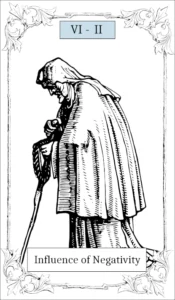
- The symbol: The hero’s negativity influences the subject. To resolve the subject, the hero has to be negative.
- Hint part:
- Introduce the following factors:
- The possibility of the subject occurring
- The factor that the hero can be a negative
- When the hero is negative, it indicates that something will happen.
- Introduce the following factors:
- Occurrence part: The subject appears or occurs. The hero is not negative about it.
- Reaction part: The subject grows. The hero begins to deal with things that don’t bring him negativity, but that act leads him closer to the factor.
- Resolution part: The factor appears. That makes the hero negative, and he resolves the subject.
- Reward part: The hero receives a reward for what he did when he was not negative. That leads to solving a different problem (another subject).
- What to think about:
- What is the hero’s negativity?
- What is the factor that the hero can be negative?
- (When associating with another subject) What is the reward that solves another subject?
VI-III. Reversal
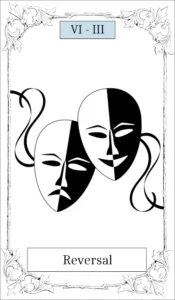
- The symbol: The subject has two opposite faces. They turn from the usual face to the hidden face at a certain time. To resolve the subject, the hero has to be aware of it and take advantage of the opportunity.
- Hint part:
- Introduce the following factors:
- The possibility that the subject could have another face
- The factor that the hero can take advantage of the opportunity
- When the hero realizes it and the face turns over, it indicates that something will happen.
- Introduce the following factors:
- Occurrence part: The subject appears or occurs. The hero is unaware of the two faces of the subject.
- Reaction part: The subject grows. The hero begins to deal with things that don’t relate to the other face of the subject, but that act leads him closer to the factor.
- Resolution part: The factor appears. That makes the hero aware of the other face, takes advantage of it, and resolves the subject.
- Reward part: The hero receives a reward for what he did when he was unaware of the other face. That leads to solving a different problem (another subject).
- What to think about:
- What are the two opposite faces that the subject has?
- What is the factor that the hero can be aware of and take advantage of?
- (When associating with another subject) What is the reward that solves another subject?
VI-IV. Changing in Cycles
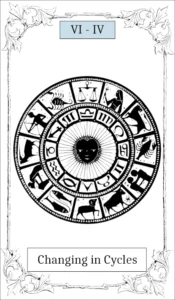
- The symbol: The subject has several states (usually 3 or 4 states). They are changing in cycles regularly. To resolve the subject, the hero has to be aware of it and take advantage of the opportunity.
- Hint part:
- Introduce the following factors:
- The possibility that the subject could have several states
- The factor that the hero can take advantage of the opportunity
- When the hero realizes it and the state changes, it indicates that something will happen.
- Introduce the following factors:
- Occurrence part: The subject appears or occurs. The hero is unaware of the cycles of the subject.
- Reaction part: The subject grows. The hero begins to deal with things that don’t relate to the cycles, but that act leads him closer to the factor.
- Resolution part: The factor appears. That makes the hero aware of the other states, takes advantage of them, and resolves the subject.
- Reward part: The hero receives a reward for what he did when he was unaware of the cycles. That leads to solving a different problem (another subject).
- What to think about:
- What are the cycles that the subject has?
- What is the factor that the hero can be aware of and take advantage of?
- (When associating with another subject) What is the reward that solves another subject?
VI-V. The Stable Current
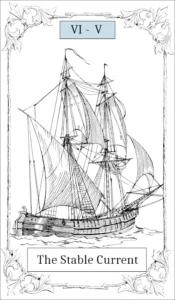
- The symbol: The subject is in a stable current that can be read ahead. To resolve the subject, the hero has to be aware of it and use the opportunity.
- Hint part:
- Introduce the following factors:
- The possibility that the subject could be in a stable current
- The factor that the hero can take advantage of the opportunity
- When the hero realizes it, it indicates that something will happen.
- Introduce the following factors:
- Occurrence part: The subject appears or occurs. The hero is unaware of the current that the subject is in.
- Reaction part: The subject grows. The hero begins to deal with things that don’t relate to the current, but that act leads him closer to the factor.
- Resolution part: The factor appears. That makes the hero aware of the current, and he resolves the subject.
- Reward part: The hero receives a reward for what he did when he was unaware of the current. That leads to solving a different problem (another subject).
- What to think about:
- What is the current that the subject is in?
- What is the factor that the hero can be aware of and take advantage of?
- (When associating with another subject) What is the reward that solves another subject?
VII. Structure Cards
The structure cards indicate the structure or positioning of the subject. The hero can understand the weak point of the subject from it. That will lead the hero to a resolution.
VII-I. The Whole Picture
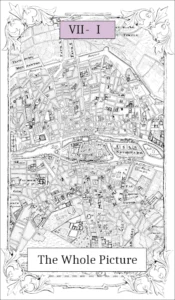
- The symbol: The subject is a part of the big something. To resolve the subject, the hero has to be aware of it and understand the role of the subject.
- Hint part:
- Introduce the following factors:
- The possibility of the subject being a part of something
- The factor that the hero can be aware of it and take advantage of the opportunity
- When the hero realizes it, it indicates that something will happen.
- Introduce the following factors:
- Occurrence part: The subject appears or occurs. The hero is unaware of the whole picture that the subject is in.
- Reaction part: The subject grows. The hero begins to deal with things that don’t relate to the whole picture, but that act leads him closer to the factor.
- Resolution part: The factor appears. That makes the hero aware of the whole picture, and he resolves the subject.
- Reward part: The hero receives a reward for what he did when he was unaware of the whole picture. That leads to solving a different problem (another subject).
- What to think about:
- What is the whole picture that the subject is in?
- What is the factor that the hero can be aware of and take advantage of?
- (When associating with another subject) What is the reward that solves another subject?
VII-II. Partial Details

- The symbol: The subject has small complexities that are useless in reality. To resolve the subject, the hero has to be aware of it and take advantage of that weak point.
- Hint part:
- Introduce the following factors:
- The possibility that the subject has small complexities
- The factor that the hero can be aware of them and take advantage of the opportunity
- When the hero realizes it, it indicates that something will happen.
- Introduce the following factors:
- Occurrence part: The subject appears or occurs. The hero is unaware of the details that the subject has.
- Reaction part: The subject grows. The hero begins to deal with things that don’t relate to the details, but that act leads him closer to the factor.
- Resolution part: The factor appears. That makes the hero aware of the details, and he resolves the subject.
- Reward part: The hero receives a reward for what he did when he was unaware of the details. That leads to solving a different problem (another subject).
- What to think about:
- What are the partial details that the subject has?
- What is the factor that the hero can be aware of and take advantage of?
- (When associating with another subject) What is the reward that solves another subject?
VII-III. Pretense of Perfection
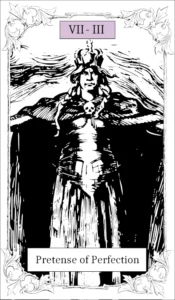
- The symbol: The subject relies on the power of pretense in some areas, even though it looks perfect. To resolve the subject, the hero has to find it out.
- Hint part:
- Introduce the following factors:
- The possibility that the subject relies on the power of pretense in some areas
- The factor that the hero can be aware of them and take advantage of the opportunity
- When the hero realizes it, it indicates that something will happen.
- Introduce the following factors:
- Occurrence part: The subject appears or occurs. The hero is unaware of the power of pretense.
- Reaction part: The subject grows. The hero begins to deal with things that don’t relate to the power of pretense, but that act leads him closer to the factor.
- Resolution part: The factor appears. That makes the hero find the power of pretense, and he resolves the subject.
- Reward part: The hero receives a reward for what he did when he was unaware of it. That leads to solving a different problem (another subject).
- What to think about:
- What is the power of pretense that the subject has?
- What is the factor that the hero can be aware of and take advantage of?
- (When associating with another subject) What is the reward that solves another subject?
VII-IV. Hidden Real Problem
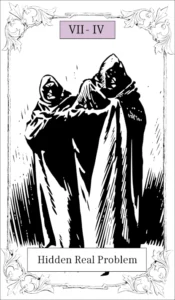
- The symbol: The subject confuses the hero about what the real problem is. There are a lot of things that seem to be problems that don’t matter in reality. To resolve the subject, the hero has to be aware of it.
- Hint part:
- Introduce the following factors:
- The possibility that the subject confuses the real problem
- The factor that the hero can be aware of the real problem and take advantage of the opportunity
- When the hero realizes it, it indicates that something will happen.
- Introduce the following factors:
- Occurrence part: The subject appears or occurs. The hero is unaware of the real problem.
- Reaction part: The subject grows. The hero begins to deal with things that don’t relate to the real problem, but that act leads him closer to the factor.
- Resolution part: The factor appears. That makes the hero aware of the real problem, and he resolves the subject.
- Reward part: The hero receives a reward for what he did when he was unaware of the real problem. That leads to solving a different problem (another subject).
- What to think about:
- What is the real problem? What are the problems that don’t matter in reality?
- What is the factor that the hero can be aware of and take advantage of?
- (When associating with another subject) What is the reward that solves another subject?
VII-V. Secrets & Lies
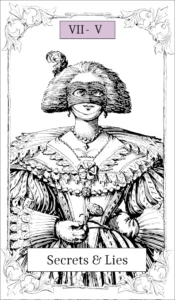
- The symbol: The subject has secrets and lies. To resolve the subject, the hero has to be aware of the existence of them.
- Hint part:
- Introduce the following factors:
- The possibility that the subject has secrets and lies but hides them
- The factor that the hero can be aware of them and take advantage of the opportunity
- When the hero realizes it, it indicates that something will happen.
- Introduce the following factors:
- Occurrence part: The subject appears or occurs. The hero is unaware of its secrets and lies.
- Reaction part: The subject grows. The hero begins to deal with things that don’t relate to the secrets and lies, but that act leads him closer to the factor.
- Resolution part: The factor appears. That makes the hero aware of the secrets and lies, and he resolves the subject.
- Reward part: The hero receives a reward for what he did when he was unaware of the secrets and lies. That leads to solving a different problem (another subject).
- What to think about:
- What are the secrets and lies that the subject has?
- What is the factor that the hero can be aware of and take advantage of?
- (When associating with another subject) What is the reward that solves another subject?
VIII. Blank Card
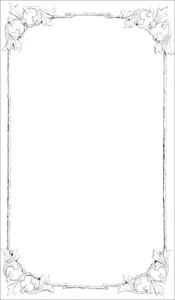
When you create multiple subjects, use this card and sticky notes. Write down and paste the ideas on this blank card. Then, put the drawn card back and draw the card with a new subject.

